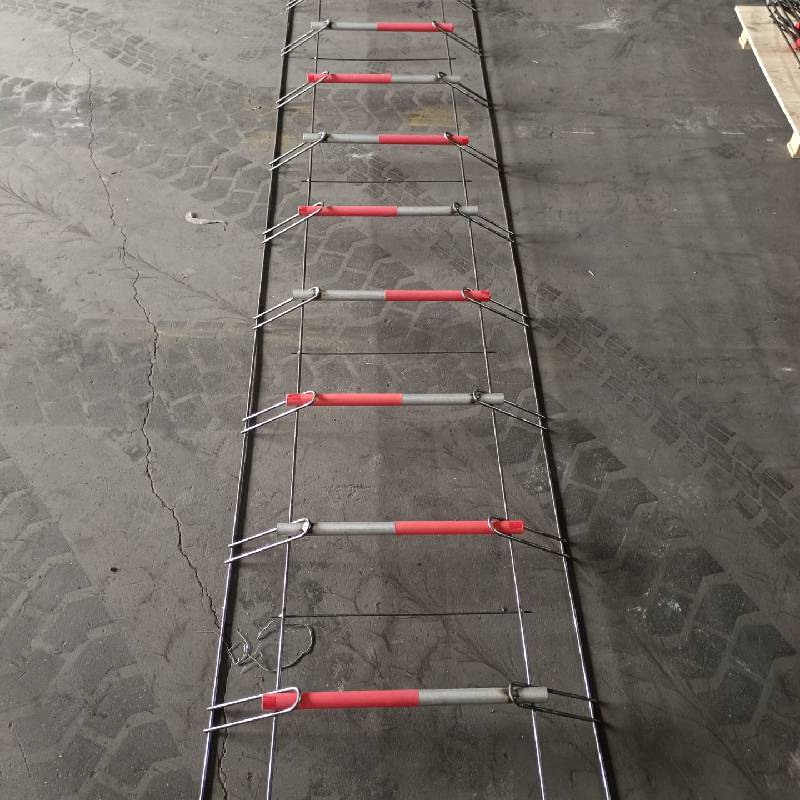
- Mobile Phone
- +8613931874955
- sales@cntcmetal.com
Welded Wire Mesh Panels for Reinforcing Concrete Applications and Structural Support
The Benefits of Welded Wire Mesh Panels for Concrete Applications
Welded wire mesh panels have gained significant popularity in the construction industry, particularly for concrete applications. These panels consist of a grid of wires that are welded together at each intersection, providing a strong and stable framework for various structural and architectural purposes. This article explores the advantages of using welded wire mesh panels in concrete work, along with their applications and potential benefits.
Strength and Durability
One of the primary reasons why welded wire mesh panels are favored in concrete applications is their inherent strength and durability. The welding process creates a robust bond between the intersecting wires, ensuring that the panels can withstand considerable tensile and compressive forces. When embedded in concrete, these panels enhance the structural integrity of the concrete, helping to prevent cracking and increasing load-bearing capacity. This makes welded wire mesh an excellent choice for various projects, from residential foundations to commercial buildings.
Versatility in Applications
Welded wire mesh panels can be utilized in a wide range of concrete applications. They are commonly used in the reinforcement of slabs, pavements, walls, and other structures. The panels can be customized to meet specific project requirements, including different wire diameters, spacing configurations, and panel sizes. This versatility makes welded wire mesh panels suitable for various construction types, from small DIY projects to large-scale infrastructure developments.
Additionally, welded wire mesh panels can also be used in non-structural applications such as fences, animal enclosures, and garden trellises. Their uniform grid structure allows for excellent visibility and airflow, making them ideal for agricultural applications as well.
Cost-Effectiveness
welded wire mesh panels for concrete

Using welded wire mesh panels can also be a cost-effective solution for construction projects. The manufacturing process of these panels allows for mass production, which can significantly reduce costs compared to traditional reinforcement methods like rebar tying. Furthermore, the ease of handling and installation of welded wire mesh minimizes labor requirements on-site, leading to reduced construction timelines and overall project costs. Consequently, builders can complete projects more efficiently, saving both time and money.
Enhanced Safety
Welded wire mesh panels contribute to improved safety on construction sites. Their uniform structure reduces the risk of misalignment during installation, which can often lead to structural weaknesses. Additionally, the robust nature of welded wire mesh helps ensure safety against potential failures, providing peace of mind to builders and project stakeholders. The panels are also less prone to rust and corrosion when made from galvanized steel, promoting longer-lasting performance in various environmental conditions.
Environmental Considerations
Sustainability is increasingly becoming a critical consideration in construction practices. Welded wire mesh panels can be manufactured from recycled materials, making them an environmentally friendly choice for reinforcing concrete. Additionally, the longevity of these panels reduces the need for frequent replacements, contributing to less waste and a lower environmental footprint over the lifespan of the structure.
Conclusion
Welded wire mesh panels represent a modern solution for reinforcing concrete in the construction industry. Their strength, versatility, cost-effectiveness, enhanced safety, and environmental benefits make them a preferred choice among builders and engineers. As the demand for high-quality construction continues to rise, incorporating welded wire mesh panels into concrete projects will likely remain a key practice for achieving robust and sustainable structures. With the right specifications and design considerations, these panels can play a crucial role in shaping the future of construction.
share:
-
Why Sacrificial Formwork Is Redefining Underground ConstructionNewsJun.06,2025
-
The Structural Dynamics of Modern Concrete: How Snake Spacers Revolutionize Flexible ReinforcementNewsJun.06,2025
-
Snake Spacers Smart-Lock Concrete Reinforcement with Surgical PrecisionNewsJun.06,2025
-
Snake Spacers: Reinforcement Precision for Modern Concrete ProjectsNewsJun.06,2025
-
Snake Spacers Powering Concrete's Structural DNANewsJun.06,2025
-
Slither into Success: Snake Spacers' Precision Bite for Unbreakable ReinforcementNewsJun.06,2025
-
Sacrificial Formwork: Building Stronger, Faster, and Safer StructuresNewsJun.06,2025



















